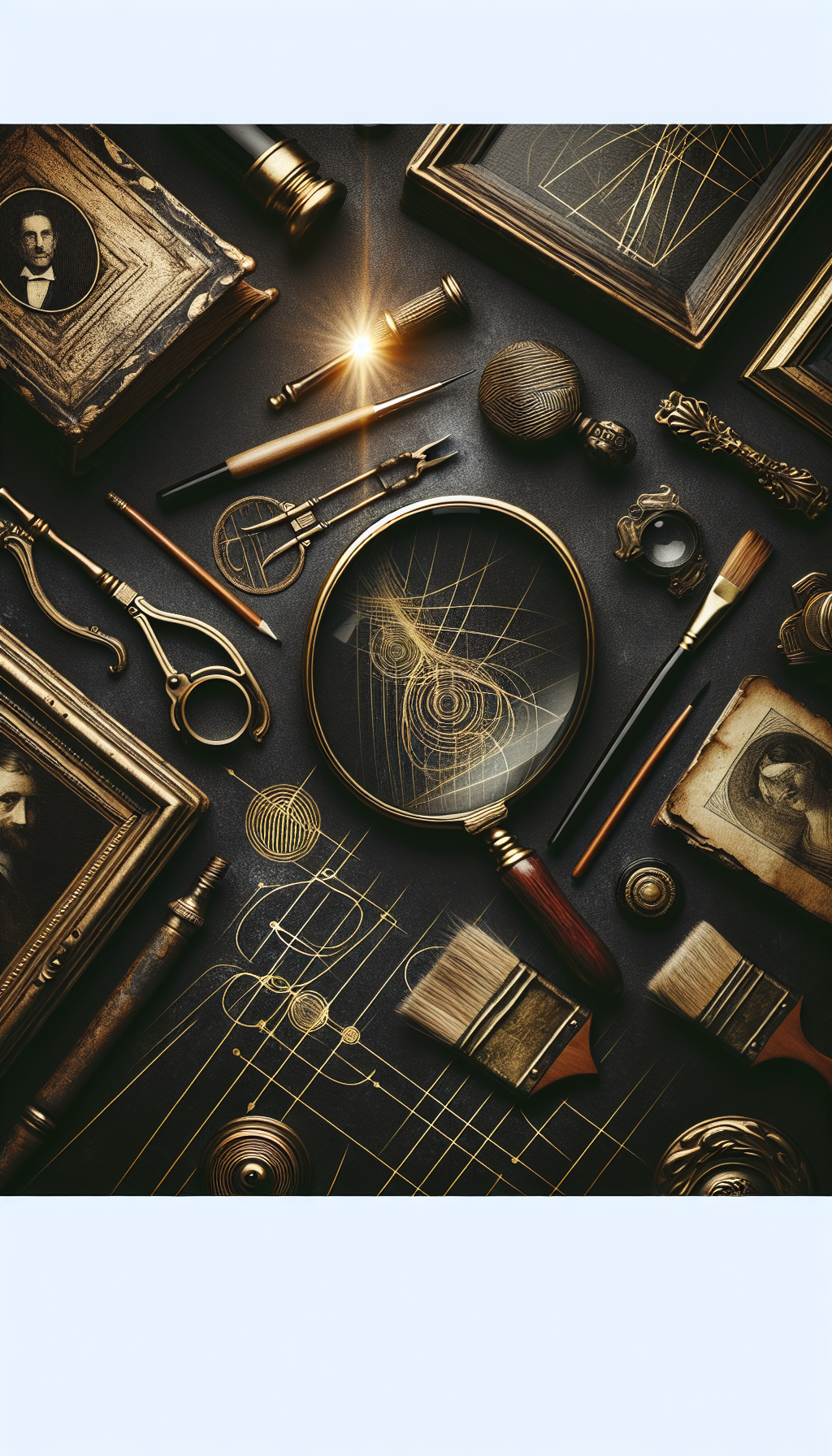Keith Haring 88 One Dollar Bill Drawing
A Keith Haring dollar bill drawing dated 1988 sits at the intersection of blue-chip contemporary art and urban ephemera. These are unique, hand-drawn works—typically in black felt-tip marker—executed directly on a U.S. one-dollar bill and signed and dated by Haring, often “K. Haring 88.” While diminutive, they encapsulate the artist’s language—radiating lines, barking dogs, dancing figures, and the iconic crawling baby—rendered with the swift, confident line for which he’s renowned. For collectors and appraisers, they raise particular questions about authenticity, condition, and market value that differ from his works on paper or editions.
This guide outlines what defines an authentic 1988 dollar bill drawing, how to scrutinize signatures and line quality, what to watch for in conservation, and how the market typically prices these compelling objects.
What Collectors Mean by “Keith Haring 88 One Dollar Bill Drawing”
- Medium and substrate: The drawing is executed on genuine U.S. currency, a one-dollar bill (rag paper composed roughly of 75% cotton and 25% linen with embedded red and blue fibers).
- Date: “88” denotes 1988, late in Haring’s career (he died in 1990). By 1988 his visual vocabulary was fully established, and he frequently made quick, signed drawings for admirers, collaborators, and at events.
- Typical imagery: Core Haring motifs may appear—Radiant Baby, barking dog, dancing or interlocking figures, hearts, angels, UFOs, or pyramid/eye forms—often accented with radiating lines or motion marks.
- Signature/inscription: Commonly “K. Haring 88” or “K. Haring ‘88,” occasionally accompanied by a small heart or “©”. Placement varies; inscriptions may appear on either side of the bill, sometimes personalized “For [Name].”
- Category: These are unique drawings, not prints. The Pop Shop produced merchandise and editions, but currency drawings are hand-drawn, one-off objects.
Because they are small, portable, and visually punchy, dollar bill drawings have circulated widely and are among the most forged Haring items. Careful, methodical evaluation is essential.
Authenticity: Artist’s Tells, Red Flags, and How Experts Evaluate
Authenticating any Haring work should be a holistic process: examine the object, signature, drawing style, materials behavior, and provenance together. No single tell is definitive in isolation.
Key positive indicators:
- Line quality: Haring drew with confident, unhesitating strokes. Expect even, assured pressure, minimal correction, and smooth curves. Lines often begin and end cleanly, with decisive intersections and few “hairline” hesitations. Radiating lines typically appear in small, consistent sets around figures.
- Economy of means: Haring rarely overworked small drawings. The composition reads clearly and is resolved with fewer strokes than imitators often use.
- Ink behavior on currency: Felt-tip ink should slightly feather into the currency’s rag fibers—more apparent in the unprinted margins than over darker, intaglio-printed areas. The line tends to look fractionally more saturated in blank zones and marginally sit “on top” of densely inked green/black areas.
- Signature conventions: Many authentic examples read “K. Haring 88” in blocky, legible capitals for K and H, with spacing that doesn’t feel cramped. Variants exist, so treat this as guidance, not a rule. The year typically follows the name on the same line.
- Aging harmony: The ink’s tone and the bill’s paper aging should feel coherent. On an honest 1988 drawing, the black may have dulled slightly; the bill may display light handling, toning, and corner softening, consistent with three decades of age (and often more if the bill was already circulated when drawn upon).
Common red flags:
- Laborious or shaky lines: Hesitant outlines, excessive touch-ups, or repeated retracing suggest imitation. Haring’s lines usually look effortless and quick.
- Over-detailing: Too much hatchwork, fussy shading, or attempts at “complexity” in a small space are uncharacteristic for this format.
- Signature anomalies: Incorrect letter forms, strangely placed apostrophes, exaggerated flourishes, or anachronistic inscriptions. Obvious misspellings or awkward spacing are suspect.
- Fresh-ink look: Jet-black ink with no surface absorption, glossy pooling, or modern dye fluorescence under UV can signal recent application. (Note: UV response is indicative, not conclusive; rely on multiple methods.)
- Incongruent wear: A perfectly crisp, uncirculated bill with “aged” ink—or vice versa—should prompt questions. Natural wear patterns tend to be consistent across bill and drawing.
- Too-good-to-be-true provenance: Generic “COA”s from unknown entities or certificates that merely repeat a sales listing without independent basis.
Provenance and due diligence:
- Best-case provenance includes first-hand documentation (photos, dated letters, event ephemera) linking the piece to the artist or a reputable primary-market source.
- Gallery invoices from respected dealers active in Haring’s market and credible past auction records add weight.
- The Keith Haring Foundation does not offer authentication opinions. Independent, qualified scholars and experienced appraisers are typically engaged to assess such works.
When in doubt, assemble a dossier with high-resolution images (including microscopic details), UV/visible light comparisons, and a well-documented provenance timeline for expert review.
Condition and Conservation Considerations
A dollar bill drawing presents unique conservation challenges because currency was never intended as an archival art substrate.
Typical condition issues:
- Folds and creases: Horizontal/vertical wallet folds, corner bends, and general handling wear.
- Toning and discoloration: Oxidation, localized staining, or overall yellowing; tide lines from past humidity or moisture exposure.
- Edge losses and pinholes: Small nicks or staple perforations; occasionally pinholes from tacking.
- Tape and adhesive residues: Pressure-sensitive tape staining is common on ephemera and very difficult to reverse safely.
- Ink fading or migration: Felt-tip inks can fade with UV exposure; feathering may increase over time.
- Cleaning/pressing damage: Over-flattened bills can display “crushed” paper texture; attempts to wash or bleach can disturb inks and embedded fibers.
Best practices:
- Framing: Use museum-grade, UV-filtering glazing (preferably 99% UV), acid-free cotton rag mount, and reversible paper corners or a non-adhesive currency mount that does not touch inked areas. Avoid dry-mounting and pressure-sensitive tapes.
- Environment: Stable humidity (roughly 45–55%) and temperature (about 18–22°C). Keep away from direct sunlight and high-UV artificial lighting.
- Handling: Cotton or nitrile gloves; support on a clean, inert surface. Avoid touching the inked areas.
- Conservation treatment: Consult a paper conservator with experience in modern media before any intervention. Many “quick fixes” (erasers, solvents, aqueous washing) can irreversibly affect ink and fibers.
- Storage: If unframed, store in a buffered, archival folder or polyester sleeve with interleaving; avoid PVC.
Note that some circulation wear can be desirable as part of the object’s story. Over-restoration that chases “mint condition” may harm both aesthetics and value.
Market Performance and Value Drivers
Dollar bill drawings are highly collectible and regularly achieve strong prices relative to their size, though they sit below major works on paper or canvas. While actual results vary by venue and timing, the following generalizations reflect recent market behavior:
Typical ranges:
- Many authentic, well-provenanced examples trade in the low five figures. As a broad guide, a range of roughly USD 10,000–50,000 is common.
- Examples with especially desirable iconography (e.g., a bold Radiant Baby or barking dog), excellent signature placement, and clean condition can exceed that range in competitive sales.
- Personalized dedications can narrow the buyer pool, sometimes moderating price, though they may strengthen provenance.
Key value drivers:
- Subject matter: Recognizable, archetypal Haring motifs usually command premiums. A well-composed figure with radiating lines often outperforms abstract doodles.
- Signature and date: A clear “K. Haring 88” (or close variant) in a legible position adds confidence and value.
- Condition: Moderate, honest wear is acceptable; losses, stains, or aggressive restoration reduce value.
- Provenance: Strong, documented provenance can be determinative, especially in a market wary of forgeries.
- Market venue: Blue-chip auction houses and established galleries can realize higher prices due to buyer confidence and global reach.
- Rarity within type: While Haring made a number of works on found materials, fully resolved, signed currency drawings are scarcer than his editioned items and command unique-work pricing.
For formal appraisals, select comparables that match the object closely on substrate (currency vs. paper), year (1988), subject iconography, and inscription characteristics. Adjust for venue, currency exchange, buyer’s premium, and condition.
Appraisal Approach and Documentation
Whether you’re preparing an insurance valuation, equitable distribution, or a sale estimate, follow a structured process:
- Identification: Record object type (“Unique drawing on U.S. one-dollar bill”), artist, year (from inscription), and medium (“black felt-tip marker on U.S. currency”).
- Measurements: Note exact dimensions of the bill and any mat/window if framed.
- Inscriptions: Transcribe signature, date, dedications, and any verso notes; photograph them clearly.
- Condition report: Describe folds, toning, stains, edge wear, pinholes, adhesives, ink behavior, and any conservation history. Include raking light images to show surface texture.
- Provenance: Build a timeline of ownership with dates, documents, invoices, and past sales. Distinguish between primary sources (contemporary letters, photos) and secondary statements.
- Literature/exhibitions: Note any publications or exhibitions if applicable (rare for currency drawings but valuable when present).
- Market analysis: Assemble recent, relevant comparables (ideally 3–6). Normalize prices to net hammer when appropriate and note premiums.
- Valuation conclusion: State a value with a defined premise (e.g., fair market value vs. retail replacement) and effective date.
- Assumptions/limiting conditions: Include a clear statement about authenticity assumptions and scope of examination if you did not inspect in person.
- Photographic documentation: Provide high-resolution color images recto/verso, details, and scale reference.
Where authenticity is uncertain, present a provisional value contingent on expert confirmation, or recommend further analysis (technical examination and scholarly opinion).
Quick Appraisal Checklist
- Verify substrate: genuine U.S. $1 bill with embedded fibers; inspect under magnification.
- Examine line quality: confident, single-pass strokes; minimal corrections; consistent radiating lines.
- Assess ink behavior: slight feathering into rag fibers; natural aging; no suspicious gloss or pooling.
- Check signature/date: a plausible “K. Haring 88” (or close variant) in a believable hand and placement.
- Look for core iconography: Radiant Baby, barking dog, dancing figures, hearts—coherent and economical.
- Cross-check wear: bill’s folds/toning consistent with ink aging; avoid mismatched “new bill / old ink” or vice versa.
- Document provenance: gather primary documents, photos, and reputable invoices; beware generic COAs.
- Condition triage: note tape, stains, pinholes, tears; avoid cleanup before expert review.
- Market comparables: select like-for-like examples (substrate, year, subject) and adjust appropriately.
- Consult experts: when value or authenticity is material, seek experienced Haring specialists and a paper conservator.
FAQ
Q: Is it legal to own or sell a defaced U.S. one-dollar bill with a drawing on it? A: In the United States, defacing currency is generally unlawful only if done with fraudulent intent or to render it unfit for reissue. Artworks on currency are commonly traded. Check local laws if transacting internationally.
Q: Will the Keith Haring Foundation authenticate my dollar bill drawing? A: No. The Foundation does not provide authentication opinions. Engage qualified independent experts and appraisers, and prioritize strong provenance.
Q: My example is personalized “For [Name].” Does that help or hurt value? A: Personalizations can strengthen provenance but may narrow the buyer pool. For general market resale, dedications sometimes moderate price; for collectors connected to the dedicatee or context, they can be a plus.
Q: Can I press or clean the bill to improve its appearance? A: Avoid DIY treatment. Pressing, washing, or adhesive removal can damage ink and fibers. Consult a professional paper conservator before any intervention.
By approaching a “Keith Haring 88 One Dollar Bill Drawing” with a disciplined eye—attending to line, ink, substrate, provenance, and market context—you can evaluate these compact but potent artworks with confidence.



